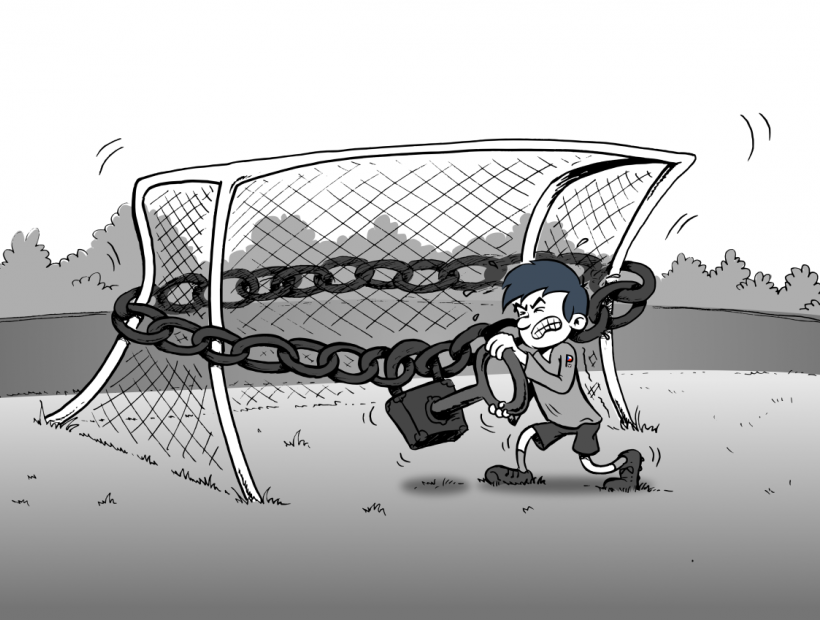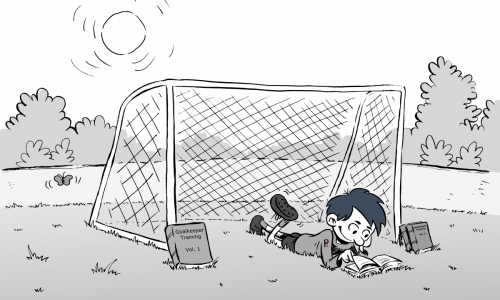It’s been more than twenty-five years since the back pass was prohibited in football. Back then, this change amounted to a revolution. The goalkeeper had always been allowed to catch any ball in his hands, even passes coming from his own team-mates. And it used to happen all the time. If a defender found himself in a pickle or wanted to delay the game a little bit, he just passed the ball to the goalkeeper, who then caught it and held it as long as was necessary. It has been calculated that at the 1990 World Cup goalkeepers had the ball in their hands for a total of 4 whole minutes in every match!
You see?
It delayed the game so much football became nearly unwatchable.
And today? Thanks to the back-pass rule, the game flows much more smoothly. It also means the goalkeeper must be much better with his feet now. When you get the ball from a team-mate and need to return it to the field without making a mistake or kicking it directly to an opponent, it’s your feet that decide, not your hands.
Another and also vital part of a goalkeeper’s life is catching technique. There are several approaches and styles, schools of you will, and it’s hard to say which one is the best. The best thing you can do is gain experience, hands-on experience, and then combine the elements that work best for you. However, a goalkeeper who is in a bad position when the opponent is kicking the ball loses vital time by moving into the right position. And more often than not this is a mistake you can’t remedy.
What do I mean by the right position? A situation where you control your own goal, you have your eyes on the ball and you see opponents in potentially dangerous positions. It would be best for me to show you a video, but for now an example will have to do. If a goalkeeper is standing on the line the moment a player in a position that does not pose a direct threat sends a cross ball to a team-mate who’s running into the six-yard box, he’s in a bad position. Why? Because he’s not reading the game correctly.
It’s five metres from the goal line to the edge of the goal area, so you’ll never be able to make it to catch a cross ball there, it’s physically impossible. That means the goalkeeper is allowing the opponent to make an accurate pass to his team-mate.
Don’t worry, this is not an exam. I’ll only tell you what I think is the perfect solution: A goalkeeper who knows how to anticipate must change his position in relation to both the player putting in the cross and the player running into the box, so that he can prevent them from playing together. He doesn’t stay put on the goal line, he makes a couple of steps forward so that he has time to deflect the cross ball.
You might get five similar situations in a match, but then you might get fifty even more complicated situations, and we the goalkeepers always try to solve them and deny the opponent.
Guard the goal, that is our mission.
And if I had to give future generations of goalkeepers one piece of advice, it would be this: Remember that if you’re in the right position, you’ll avoid many more goals by simply reading the game and anticipating than by shot-stopping and flashy reaction saves.
P.S. The following chapter coming up next week!
Other news
 27.8.2018 16:00
27.8.2018 16:00
HIS LIFE: Let’s not just pat our backs...
A story by our special guest Jan Stejskal, a renowned goalkeeper who coached Petr at Sparta and in the national team. …


